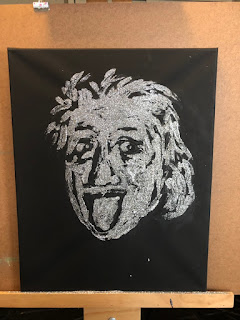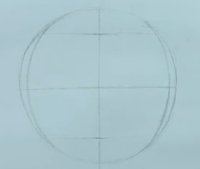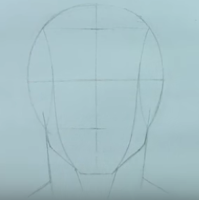Never thought I'd make it here. The end. Before I close all my 30 tabs for the Genius Project, it's only right to give one last reflection now that my presentation has finished. It's also literally required.
I decided to write little mini-journal entries, so y'all can kind of understand the roller coaster of emotions that was the last half of this week, facilitated by Spongebob gifs!
April 10th, 2019:
6:34 AM:
Help, help, help. It's WEDNESDAY MORNING. It's 6:34 AM right now, about an hour and 5-10 minutes away from when I'll be on that stage.
Help, help, help. It's WEDNESDAY MORNING. It's 6:34 AM right now, about an hour and 5-10 minutes away from when I'll be on that stage.
I'm half-panicking but also half-excited to end the project and ACTUALLY finish. Hopefully it'll go okay! Just need to run through it a couple more thousand times.

8:40 AM:
I presented.
I presented.

10:03 PM:
My failures of today are setting in more and more. There's nothing I can really do at this point. I guess I'll finish my very sad blog post tomorrow, but right now, I'm gonna' sleep.

Now:
I've been asking around, and it turns out most people didn't know that I messed up. In case you didn't see my Ted Talk, or just didn't catch it, I forgot many pieces to my script and tried to cover it up with some improvisation. In my opinion, it didn't go over well. I thought I was a jumble of words and a stuttering mess, but hopefully I managed to convey my message in a somewhat coherent way? Helen recorded me (with my permission), but I haven't been able to bring myself to see it.
Actually, maybe my Ted Talk wasn't as bad as I thought.........Nah, it was probably really bad and everyone is just lying to me to make me feel better.
Actually, maybe my Ted Talk wasn't as bad as I thought.........Nah, it was probably really bad and everyone is just lying to me to make me feel better.
If I could do a do-over--actually, I did film a do-over on my old projector and posted it here just to redeem myself a little bit. But then I deleted it from this blog post, because I realized it probably was still the same quality as my actual Ted Talk because I still talked too fast and blanked a little bit. However, my thoughts were smoother, more collected, and more of a clean train of though.
My actual Ted Talk was anything but. And in retrospect, it was a bit of a dramatic exaggeration to say I forgot my entire script. I mean, I'd hope I didn't, I memorized for literally hours. I forgot pretty big pieces: I knew my points, but forgot all the supporting statements I wanted to include. Now that I can do what my literal message was: reflect, I can kind of see how everything I did was basically set up for failure.
What I did wrong #1:
My script was too complex.
My script was long, a nice 926 words. My style of writing speeches is to pair each point with a lot of examples, a lot of repetitive sentences and phrases to reaffirm or emphasize my point, but in actuality, it made my script too complex and I needed to remember more than I probably needed to.
What I did wrong #2:
I did the bulk of my memorization when I had the worst mental state for it.
Most of my memorizing was at night. I memorized my script at odd hours, I'm talking like past midnight. While I memorized it, it wasn't as efficient and effective as it could've been if I was more awake and conscious to actually retain everything.
What I did wrong #3 (we're at three now?):
My note cards were unusable.
I used 25 note cards, and I wrote them in the most inefficient way possible. Because I just like making things difficult for myself.
I don't know why my naive little brain decided to DOUBLE SPACE my notecards. In my Multiple Intelligence presentation and my brain presentation, I literally never wrote out my entire script. I only wrote out a little outline of my main points and little phrases I was prone to missing. And as far as I can tell, it worked. My Multiple Intelligence presentation needed two flashcards, and my brain project needed one, and I barely used either of them.
But for some reason, I decided to write out the entire speech, but I was worried of getting lost in a big block of words on each card, unable to find where I was. So I thought double spacing was a good idea. It was not.
On stage, when I started losing track of where I was, I tried to figure it out by looking at my cards, which I hadn't flipped since I started speaking. But because I double spaced it, it look like 4 cards to flip past the 4 sentences for my FIRST paragraph. And I had already spent too much time looking at my cards, and I panicked and just gave up on using them.
I suggest doing an outline, if not for your entire project, then just for each slide. If you have to write out your entire script, just please, for the love of god, DO NOT double space. I probably don't even need to tell you all, because you probably already knew this, and it was just me out of the loop.
What I did wrong #4:
I went into my presentation KNOWING I had to cut some out.
My finished script was over 5 minutes when I read it slowly and clearly, so I knew going up on that stage I would cut out a few of my sentences where I was just reiterating my point over and over. And that is NOT a good idea. Your script should be finalized, don't plan to change it only in the presentation but not in practice. That gives you a responsibility to worry about instead of just reciting your script.
What I did wrong #5: Most of all...
I let it get to my head.
When I was just starting, the idea of me presenting to people on a stage was daunting, but not quite nightmare status yet. But as I started messing up--as I started reaching for the words I memorized for so long, but couldn't find them--I started thinking oH MY GOD THERE ARE PEOPLE HERE THEY ARE LOOKING AT ME. THEIR EYES ARE ON ME. THEY SEE ME MESSING UP. WHY AM I SO HIGH UP?
Hindsight 20/20, it really isn't that bad to talk in front of an audience, as a dear Helen Chang told me, it's only 5 minutes of my life, but I desperately wanted those 5 minutes to be over. This definitely contributed to some freaking out I did on the stage, and I have no clue how to prevent that, I think it just comes with the personality.
Overall, the main reason why I didn't well, is because of how nervous I was. And I don't really know how to remedy that. I don't think I'll ever be good at presenting, especially on a stage, but I tried to cover up my forgetfulness and tried to synthesize all my discombobulated thoughts together. Who knows? Maybe it turned out better than I thought.
Let's assess my progress over all 6 weeks, real quick.
I did mostly follow my timeline. Week three, of course, I decided to focus on body poses again, and I was really glad I did, since that was the most fun week, for me.
And I did, kind of, forget about my scale--ahem, sorry, the "The Scale that Measures How Objectively Good and How Objectively Bad This Drawing Is" Scale™
Let me put my three final paintings on it:
Here they are for reference:
(From left to right) Albert Einstein, Allie, and McPerlman
I think the only reason why these paintings are so high is because the glitter effect is actually really cool. Even if glitter is evil and out to get me.
Oh wait, I almost forgot to rank my presentation as a true measure of my accomplishments.
Again. Totally objective.
What did I do right? You may ask?
Well, I actually thought my intro, while not interesting, was kind of cute. I compiled clips from my friends' projects (thanks Krosky for making the group of all freshman more diverse) to kind of show a culminating little video for the Genius Project.
I also tried to make my powerpoint interesting, but I don't know how much I actually succeeded in that.
A Final Word: the irony is not lost on me that the main message of my presentation was: "When all you feel is disappointment, reflect on what's holding you back!", and I'm writing this right now, reflecting on the disappointment that was my presentation. But in all honesty, I'm glad for this project, because I was truly able to have fun with my project and my paintings. And I hope to become better at presenting and improvising! So, maybe messing up on stage was worth the lessons I learned? Tit for tat, I guess.
So an open letter to the Genius Project, because I just can't stop making this blog longer and longer:
Dear Genius Project,
Thank you for the blood, sweat, and tears! I truly mean it when I say you're probably one of the most difficult projects I've ever done, because of the personal walls and disappointment I had to face, as well as probably the most nerve-wracking, anxious presentation I've been daunted with to date. Looking back at all my blogs, I find it endearing to look at my little scribbles of drawings, and see what they've become throughout the weeks. I may have glitter stuck in my floors, on my clothes, in my mom's eye, and my dog's stomach, but I'm honest to god proud of what I accomplished. You may have been the most stressful project I've had thus far (I actually can't remember how stressed I was for the last two so I'm really just saying this just for dramatic effect), but you were probably my favorite. Don't tell Brain Project and Multiple Intelligence that though, you know how jealous they get.
Sincerest Regards of the Best,
Katie Lu
Time to burn all my terrible, terrible note cards and make a glitter painting of the ashes.
Citations:























































